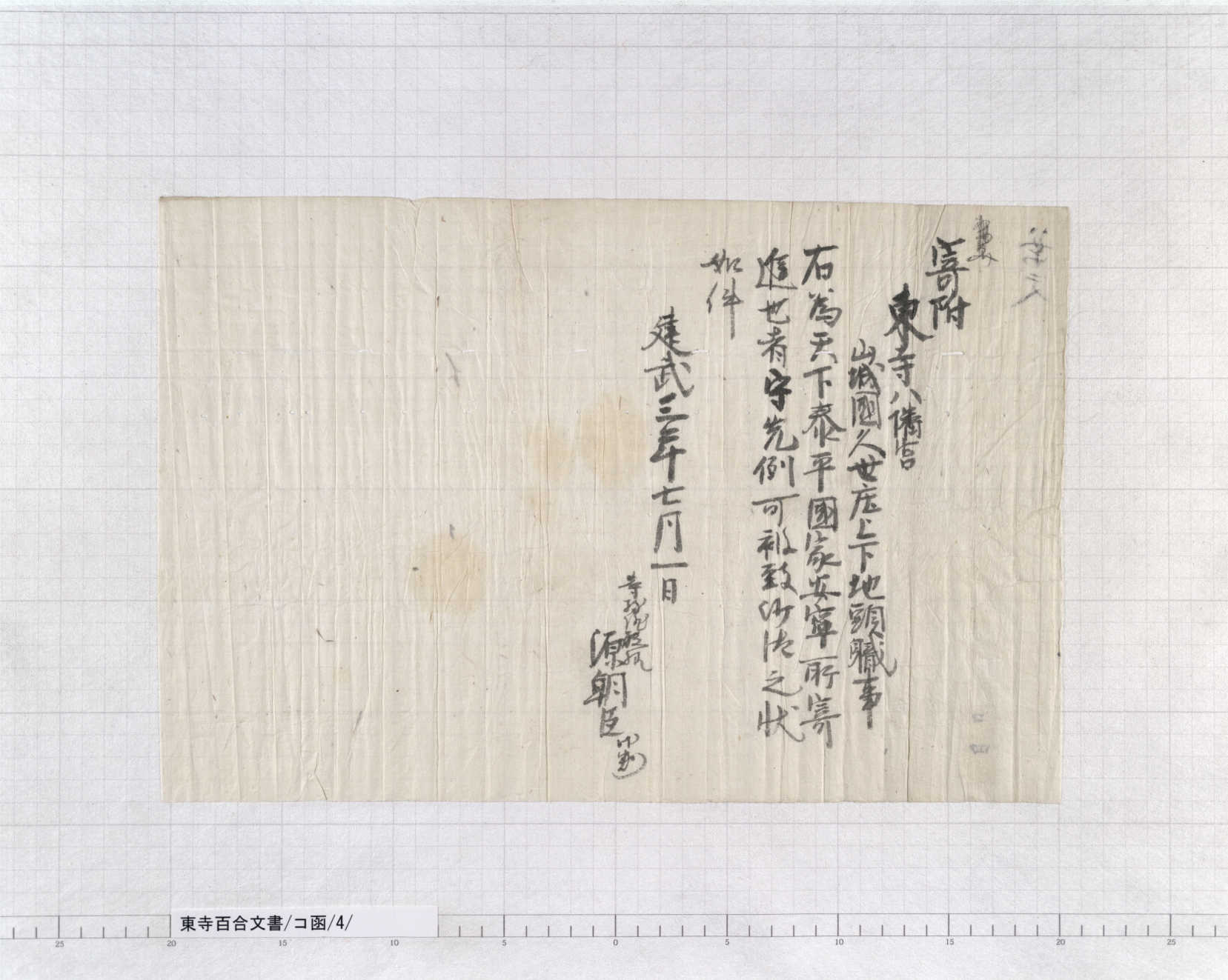Ashikaga Takauji(足利尊氏) narrowly won the battle, thanks to the protection of the Toji Chinju-Hachimangu shrine(東寺鎮守八幡宮). However, fights continued in Kyoto and in Hieizan (Mt. Hiei), and the war situation was unpredictable. As Takauji keenly wanted to achieve his fervent wish, he contributed an estate of his to Toji Chinju-Hachimangu on the day following the “release of sacred arrows by the deity”, praying for further protection.

“久世上下荘 (Kuze Kamishimonosho)” as shown in the document above refers to an estate that was located in Nishinooka. When you leave Kyoto for Shin-Osaka by train on the Tokaido Shinkansen line (東海道新幹線), you will reach Nishinooka across the railway bridge over the Katsuragawa river (Google Maps). Also in the document, “天下太平、国家安寧 (lit. peaceful world and national stability)” is considered to imply victory in the war, taking into account that Takauji was in the midst of battles.
Consequently, Takauji and his successors in the Muromachi bakufu (Muromachi shogunate) generously protected Toji, which, in turn, frequently quoted the anecdote of “sacred arrows” that made Takauji’s luck in a battle, as the basis for receiving protection by Takauji. The document below was written more than 200 years from Takauji’s contribution. The anecdote of “sacred arrows” is quoted at its beginning:

Do you remember an explanation in a previous story behind the Hyakugo Archives (Stories behind the Hyakugo Archives, “6. How the nengyoji was chosen”) that the Nengyoji (annual organizer) of Nijuikku-kata (an in-house organization) was changed at the end of December, but that the Bugyo (Leader in the administration of organization) was changed in July among Kuze-kata (Chinju-kata) (representatives of Kuza/Chinju), with the relevant letter issued at the end of June? Some might have wondered “Why in July?”
In fact, this timing of change commemorates July 1, the day when Kuze Kamishimonosho Jitoshiki(久世上下荘地頭職) was donated to Toji. The calendar of annual events by the organization of Guso (monks who serve the principal object of worship at a temple) started on January 1 and ended at the end of December. In contrast, the calendar of Chinju-Hachimangu-kata (representatives of Chinju-Hachimangu) exceptionally started on July 1 and ended at the end of next June. Naturally, records of Hyojo Hikitsuke (minutes of meetings) and changes of Nengyoji (both Bugyo and Nen’yo) were affected by the above cycle.
(Kaji, Materials Section, the Kyoto Institute, Library and Archives)